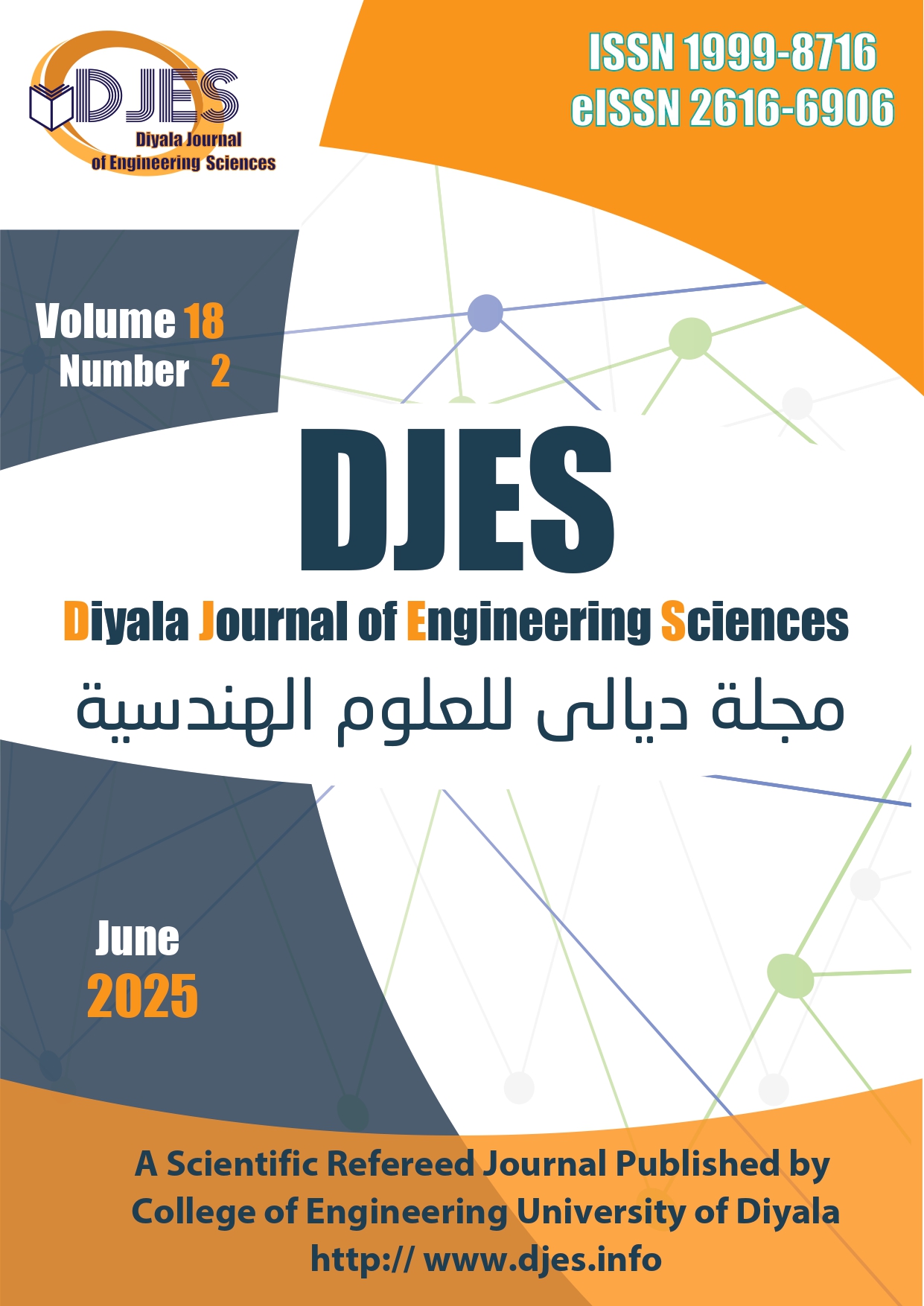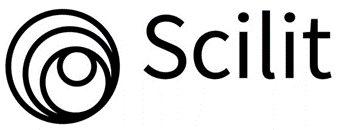Numerical Study for the Effect of Secondary Fluid Inlet Geometrical Parameters on the Performance of Water-Steam Two-Phase Ejector used for Desalination System
DOI:
https://doi.org/10.24237/djes.2024.18208Keywords:
Two-phase ejector, entrainment ratio, secondary fluid inlet angles, multiple secondary fluid inlet streamsAbstract
This study investigates the effect of secondary fluid inlet geometrical parameters on the performance of a two-phase water-steam ejector operating in the subsonic flow regime. A 3D numerical model, employing the Volume-of-Fluid (VOF) method, was developed to analyze the impact of varying secondary fluid inlet angles (30°, 45°, 60°, 75°, and 90°) and the number of secondary fluid inlets (1, 2, 3, and 4). The study examined these parameters across a range of primary fluid flow rates (6-24 L/min) to understand their interactions. The numerical model was validated through comparison with existing experimental data, demonstrating strong agreement between predicted and measured ejector entrainment ratios (Er). An optimal secondary fluid inlet angle of 45° was identified, providing the best balance between momentum transfer and perpendicular velocity components. It was found also that increasing the number of secondary fluid inlets from 1 to 3 significantly enhanced the ejector Er, while further increases yielded minimal additional improvements. The effects of secondary fluid inlet parameters were more pronounced at higher primary fluid flow rates. These results contribute to a deeper understanding of two-phase ejector performance and provide valuable insights for optimizing their design in various applications.
Downloads
References
[1] Z. Zhang, D.T. Chong, J.J. Yan, Modeling and experimental investigation on water-driven steam injector for waste heat recovery, Appl. Therm. Eng. 40 (2012) 189–197.
[2] S.A. Sherif, W.E. Lear, J.M. Steadham, P.L. Hunt, J.B. Holladay, Analysis and modeling of a two-phase jet pump of a thermal management system for aerospace applications, Int. J. Mech. Sci. 42 (2000) 185–198.
[3] W.X. Chen, P.B. Wei, Q.B. Zhao, D.T. Chong, J.J. Yan, Experimental study on the effect of swaying period and swaying amplitude on the dominant frequency of steam submerged jets pressure oscillation with vertically upward low mass flux, Int. J. Heat Mass Tran. 186 (2022), 122479.
[4] F. Innings, L. Hamberg, Steam condensation dynamics in annular gap and multi-hole steam injectors, Procedia Food Sci 1 (2011) 1278–1284.
[5] Wending Gua, Xinli Wang, Lei Wang, Xiaohong Yin, Hongbo Liu, Performance investigation of an auto-tuning area ratio ejector for MED-TVC desalination system, Applied Thermal Engineering 155 (2019) 470–479.
[6] Jiapeng Liu, Lei Wang, Lei Jia, Haoyuan Xue Thermodynamic analysis of the steam ejector for desalination applications, Applied Thermal Engineering, 159 (2019), 113883.
[7] N. Ruangtrakoon, T. Thongtip, S. Aphornratana, T. Sriveerakul, CFD simulation on the effect of primary nozzle geometries for a steam ejector in refrigeration cycle, Int. J. Therm. Sci. 63 (2013) 133–145.
[8] Shakir J. Jasim, Akram W. Ezzat, Eric Hu, “Simulation and Experimental Investigation of Performance and Flow Behavior for Steam Ejector Refrigeration System”, Journal of Engineering, Volume 29, 2023, Number 12.
[9] Y. Zhang, X.H. Qu, G.M. Zhang, X.L. Leng, M.C. Tian, Effect of non-condensable gas on the performance of steam-water ejector in a trigeneration system for hydrogen production: an experimental and numerical study, Int. J. Hydrogen Energy 45 (2020) 20266–20281.
[10] Lee Moon Soo, Lee Hoseong, Hwang Yunho, Optimization of two-phase ejector geometries using a non-equilibrium CFD model, Appl. Therm. Eng. 109 (2016) 272–282.
[11] Mustafa S Mahdi, Akram W Ezzat, Eric Hu, Parametric study of low‐temperature solar‐assisted flash evaporation desalination systems using two‐phase water–steam ejector, Heat Transfer, Volume53, Issue7, 2024, Pages 3931-3947.
[12] M. Nakagawa, A.R. Marasigan, T. Matsukawa, A. Kurashina, Experimental investigation on the effect of mixing length on the performance of two-phase ejector for CO2 refrigeration cycle with and without heat exchanger, International Journal of Refrigeration, Volume 34, Issue 7, 2011, Pages 1604-1613.
[13] J. Yan, W. Cai, and Y. Li, "Geometry parameters effect for air-cooled ejector cooling systems with R134a refrigerant," Renewable energy, vol. 46, pp. 155-163, 2012.
[14] Cui Li, Yanzhong Li, Lei Wang, Configuration dependence and optimization of the entrainment performance for gas–gas and gas–liquid ejectors, Applied Thermal Engineering, Volume 48, 2012, Pages 237-248,
[15] Ping Zheng, Bing Li, Jingxuan Qin, CFD simulation of two-phase ejector performance influenced by different operation conditions, Energy, Volume 155, 2018, Pages 1129-1145,
[16] Xuhui Wang, Sichuan Xu, Chunmei Xing, Numerical and experimental investigation on an ejector designed for an 80-kW polymer electrolyte membrane fuel cell stack, Journal of Power Sources, Volume 415, 2019, Pages 25-32.
[17] Y. Han, X. Wang, H. Sun, G. Zhang, L. Guo, J. Tu, CFD simulation on the boundary layer separation in the steam ejector and its influence on the pumping performance, Energy 167 (2019) 469–483, https://doi.org/10.1016/j. energy.2018.10.195.
[18] Akram. W. Ezzat, E. Hu, H. M. T. Al-Najjar, Z. Zhao, and X. Shu, "Investigation of steam jet flash evaporation with solar thermal collectors in water desalination systems," Thermal science and engineering progress, vol. 20, p. 100710, 2020.
[19] Egoi. O. Sampedro, "A new variable mixing chamber ejector: CFD assessment," Applied Thermal Engineering, vol. 208, p. 118242, 2022.
[20] J. Yan, J. Jiang, and Z. Wang, "Optimization on Secondary Flow and Auxiliary Entrainment Inlets of an Ejector by Using Three-Dimensional Numerical Study," Entropy, vol. 24, no. 9, p. 1241, 2022.
[21] Yao Zhou, Jiping Liu, Yuelin Mo, Weixiong Chen, Qi Xiao, Yong Li, Junjie Yan, Numerical simulation on the direct contact condensation in a steam-water two-phase ejector with non-condensable gas, International Journal of Thermal Sciences, Volume 185, 2023, 108030.
[22] Jingyang Zhang, Jinxin Geng, Sen Yang, Fengna Cheng, Guiping Zhu, Cong Wang, Zhenxi Yang, Yuanwei Lyu, Influence of geometric parameters on the performance of ejector used in aeroengine air system, Thermal Science and Engineering Progress, Volume 37, 2023, 101571.
[23] Meiqi Qin, Jia Yan, Ruixin Li, Numerical study on the impact of needle and dryness fraction on two-phase ejector performance under fixed/varied operating pressure, Case Studies in Thermal Engineering, Volume 61, 2024, 104976.
[24] Omar Saeid, Gamal Hashem, Saleh Etaig, Basim Belgasim, Atul Sagade, Performance assessment of ammonia base solar ejector cooling system emphasizing ejector geometries: A detailed CFD analysis, Energy, Volume 301, 2024, 131770.
[25] Xinyuan Wang, Jinbao Zheng, Zhaoyang Hao, Yage Di, Xuelong Miao, Study on the effect of pulsed gas flow on the entrainment performance of hydrogen ejector, International Journal of Hydrogen Energy, Volume 67, 2024, Pages 599-607
[26] Hamid Reza Mottahedi, Saman Javadi kouchaksaraei, Mohammad Ali Faghih Aliabadi, Hesel Gharehbaei, Leyla Iraj, Sajjad Bouzari, Mohammad Akrami, Effects of motive flow temperature on holding steam ejector Performance under Condenser temperature change by considering Entropy generation and non-equilibrium condensation, Applied Thermal Engineering, Volume 257, Part A, 2024, 124268.
[27] Xianying Hao, Zhiguang Chen, Xinyi Zhan, Zhicong Fang, Experimental and simulation analysis of the performance of premixed vertical ejectors, Applied Thermal Engineering, Volume 250, 2024, 123527.
[28] Rashed M.Almari, Mohamed A. Abdelrahman, Mohamed A. Moawad., An experimental investigation of the Evacuated Tube solar collector in conjunction with a latent heat storage tank, Engineering Research Journal, Vol. 1, No. 51 Jan 2022, pp.20-28.
[29] S. Welch and J. Wilson, “A volume-of-fluid based method for fluid flows with phase change,” Journal of Computational Physics, vol. 160, no. 2, pp. 662–682, 2000. DOI: 10.1006/jcph.2000.6481.
[30] ANSYS Fluent. ANSYS fluent theory guide release 2021 R2. ANSYS, Inc. July 2021
[31] Michal Majchrzyk, Damian Dziurowicz, Michal Haida, Michal Palacz, Jakub Bodys, Rafal Fingas, Jacek Smolka, Andrzej J. Nowak, Detailed numerical investigation of the CO2 two-phase ejector 3-D CFD model based on the flow visualisation experiments, Chemical Engineering and Processing - Process Intensification, Volume 182, 2022.
[32] Omer Genc, Bora Timurkutluk, Serkan Toros, Performance evaluation of ejector with different secondary flow directions and geometric properties for solid oxide fuel cell applications, Journal of Power Sources, Volume 421, 2019, Pages 76-90.
Downloads
Published
Issue
Section
License
Copyright (c) 2025 Mustafa S. Mahdi, Akram W. Ezzat

This work is licensed under a Creative Commons Attribution 4.0 International License.












